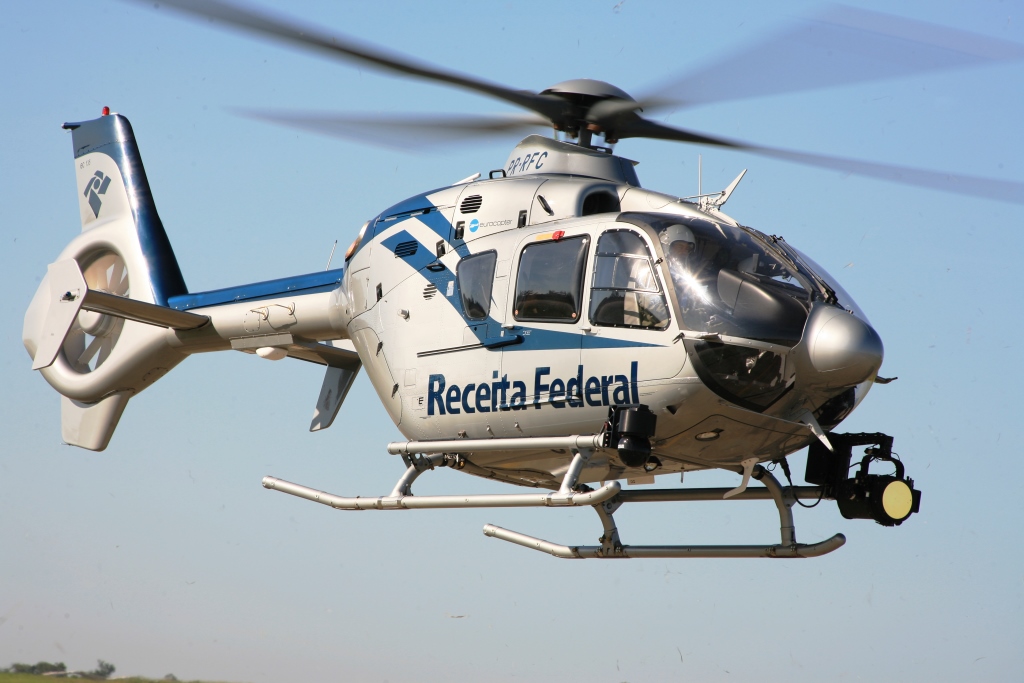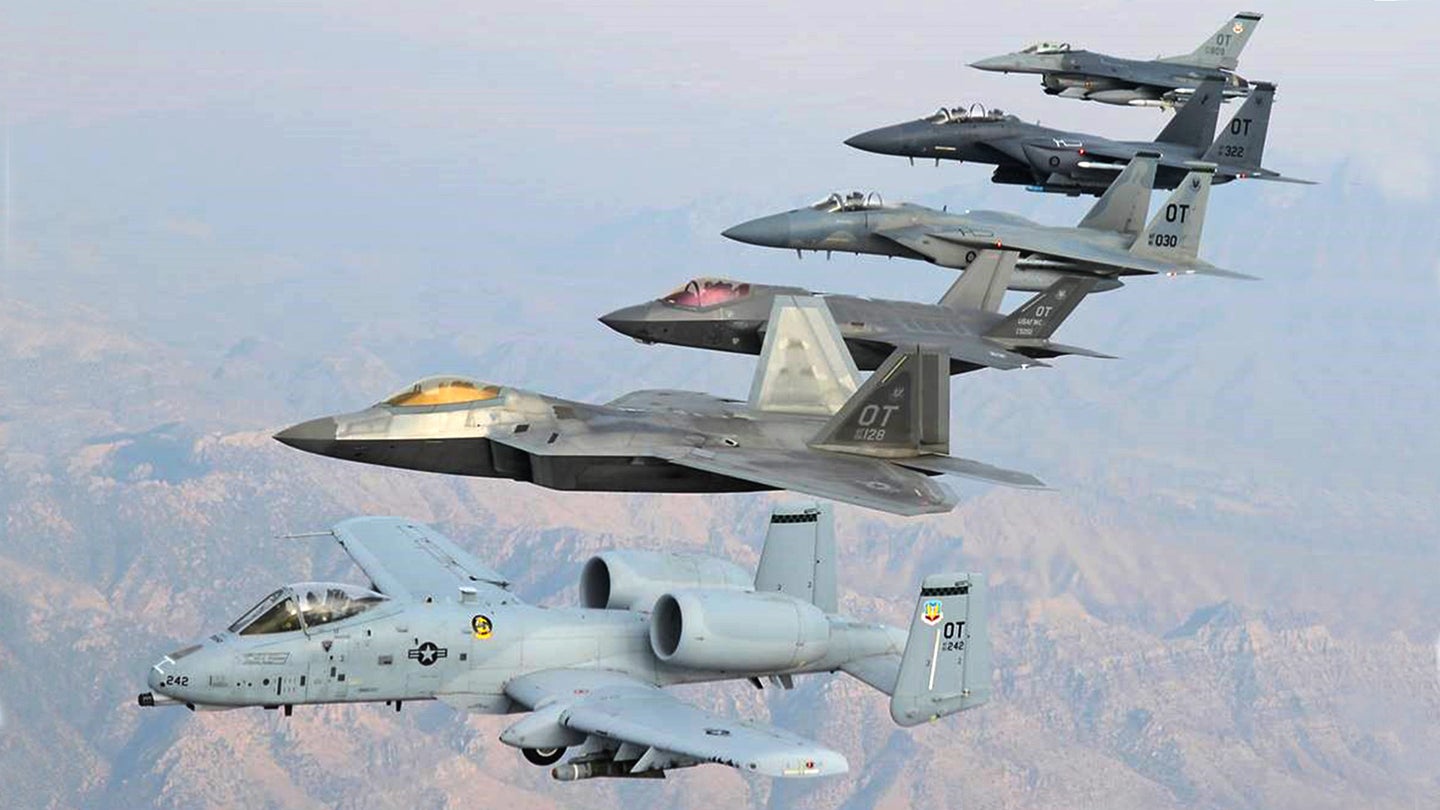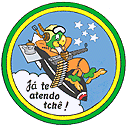USAF News
Moderadores: Glauber Prestes, Conselho de Moderação
- Matheus
- Sênior

- Mensagens: 6182
- Registrado em: Qui Abr 28, 2005 4:33 pm
- Agradeceu: 341 vezes
- Agradeceram: 432 vezes
Re: USAF News
Olhando um site sobre carros, me deparo com esse detalhado artigo do F15.
https://www.autoentusiastas.com.br/2018 ... -recordes/
https://www.autoentusiastas.com.br/2018 ... -recordes/
- Penguin
- Sênior

- Mensagens: 18983
- Registrado em: Seg Mai 19, 2003 10:07 pm
- Agradeceu: 5 vezes
- Agradeceram: 374 vezes
Re: USAF News
AI algorithm defeats human fighter pilot in simulated dogfight
https://www.c4isrnet.com/artificial-int ... -dogfight/
https://www.c4isrnet.com/artificial-int ... -dogfight/
Sempre e inevitavelmente, cada um de nós subestima o número de indivíduos estúpidos que circulam pelo mundo.
Carlo M. Cipolla
Carlo M. Cipolla
- faterra
- Sênior

- Mensagens: 5096
- Registrado em: Qui Dez 15, 2005 10:25 pm
- Localização: Belo Horizonte - MG
- Agradeceu: 89 vezes
- Agradeceram: 79 vezes
Re: USAF News

USAF - Lockheed C-5M Galaxy (L-500) - Reg.: 85-0007 MSN: 500-0093
USA, Idaho, Boise Air Terminal / Gowen Field (Municipal) (BOI / KBOI)
Photo by: CJMoeser - 933 - Idaho, USA

Um abraço!
Fernando Augusto Terra
- faterra
- Sênior

- Mensagens: 5096
- Registrado em: Qui Dez 15, 2005 10:25 pm
- Localização: Belo Horizonte - MG
- Agradeceu: 89 vezes
- Agradeceram: 79 vezes
Re: USAF News
O que há de errado com minhas postagens de fotos? Nenhuma vingou! 



Um abraço!
Fernando Augusto Terra
- Túlio
- Site Admin

- Mensagens: 61531
- Registrado em: Sáb Jul 02, 2005 9:23 pm
- Localização: Tramandaí, RS, Brasil
- Agradeceu: 6326 vezes
- Agradeceram: 6676 vezes
- Contato:
Re: USAF News
Vi apenas uma.
“Look at these people. Wandering around with absolutely no idea what's about to happen.”
P. Sullivan (Margin Call, 2011)
P. Sullivan (Margin Call, 2011)
- Viktor Reznov
- Sênior

- Mensagens: 6833
- Registrado em: Sex Jan 15, 2010 2:02 pm
- Agradeceu: 1965 vezes
- Agradeceram: 798 vezes
Re: USAF News
provavelmente o site no qual você está linkando as imagens tem proteção contra hotlinking, aí você teria que salvá-las e hospedá-las em outro site, como no Imgur.com por exemplo
I know the weakness, I know the pain. I know the fear you do not name. And the one who comes to find me when my time is through. I know you, yeah I know you.
- Penguin
- Sênior

- Mensagens: 18983
- Registrado em: Seg Mai 19, 2003 10:07 pm
- Agradeceu: 5 vezes
- Agradeceram: 374 vezes
Re: USAF News

A U.S. Air Force MQ-9 Reaper assigned to the 556th Test and Evaluation Squadron armed with an AIM-9X Block 2 missile ahead of the ABMS Onramp #2 test, during which it fired the missile to shoot down a BQM-167 target drone simulating a cruise missile. (USAF photo)
ABMS Onramp 2 Sees Second MQ-9 AIM-9X Shot and Other CMD Tactics Development
(Source: Air Combat Command; issued Sept 14, 2020)
https://www.defense-aerospace.com/artic ... drone.html
Sempre e inevitavelmente, cada um de nós subestima o número de indivíduos estúpidos que circulam pelo mundo.
Carlo M. Cipolla
Carlo M. Cipolla
- Aim For The Top
- Avançado

- Mensagens: 544
- Registrado em: Dom Ago 26, 2018 8:26 pm
- Agradeceu: 72 vezes
- Agradeceram: 367 vezes
Re: USAF News
A força aerea dos Estados unidos já esta voando com um prototipo de uma aeronave de 6th geração.
https://www.defensenews.com/breaking-ne ... ghter-jet/
https://www.defensenews.com/breaking-ne ... ghter-jet/
- alexmabastos
- Sênior

- Mensagens: 809
- Registrado em: Qua Out 18, 2006 10:59 am
- Agradeceu: 4 vezes
- Agradeceram: 7 vezes
Re: USAF News
O mais interessante é a remodelagem do processo de desenvolvimento, lançamento e construção de aeronaves de caça. Disrruptivo.Aim For The Top escreveu: ↑Ter Set 15, 2020 1:46 pm A força aerea dos Estados unidos já esta voando com um prototipo de uma aeronave de 6th geração.
https://www.defensenews.com/breaking-ne ... ghter-jet/
Novas aeronaves de 8 em 8 anos com as tecnologias mais atuais possíveis, foco do gasto em desenvolvimento e construção e não mais em modernização e manutenção.
Vai revolucionar e falir alguns países que tentarão acompanhar esse processo...
- Penguin
- Sênior

- Mensagens: 18983
- Registrado em: Seg Mai 19, 2003 10:07 pm
- Agradeceu: 5 vezes
- Agradeceram: 374 vezes
Re: USAF News
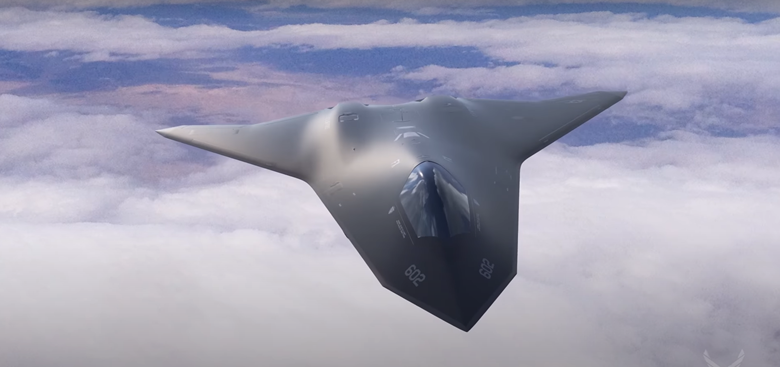
Source: US Air Force video screenshot
Conceptual rendering of a next-generation fighter aircraft, not necessarily the demonstrator that was announced by Roper
USAF secretly builds and flies next-generation fighter demonstrator
By Garrett Reim15 September 2020
https://www.flightglobal.com/fixed-wing ... 83.article
Sempre e inevitavelmente, cada um de nós subestima o número de indivíduos estúpidos que circulam pelo mundo.
Carlo M. Cipolla
Carlo M. Cipolla
- cabeça de martelo
- Sênior

- Mensagens: 39583
- Registrado em: Sex Out 21, 2005 10:45 am
- Localização: Portugal
- Agradeceu: 1140 vezes
- Agradeceram: 2864 vezes
- cabeça de martelo
- Sênior

- Mensagens: 39583
- Registrado em: Sex Out 21, 2005 10:45 am
- Localização: Portugal
- Agradeceu: 1140 vezes
- Agradeceram: 2864 vezes
- cabeça de martelo
- Sênior

- Mensagens: 39583
- Registrado em: Sex Out 21, 2005 10:45 am
- Localização: Portugal
- Agradeceu: 1140 vezes
- Agradeceram: 2864 vezes
Re: USAF News
Força Aérea dos EUA pode comprar caças F-16 novamente
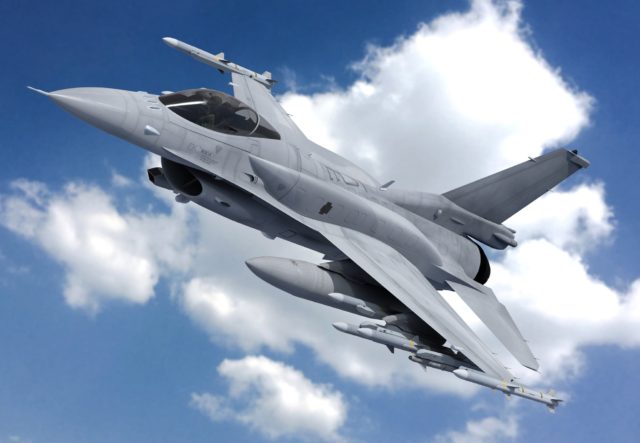
F-16V em configuração de defesa aérea
A Força Aérea dos Estados Unidos está considerando seriamente a encomenda de mais caças F-16, mais de 42 anos após a Força ter recebido seu primeiro “Fighting Falcon”. A USAF, que uma vez jurou que nunca mais compraria um caça não furtivo novamente, parece ter mudado de ideia. O custo extremo de caças furtivos como o F-35 provavelmente tem algo a ver com isso.
De acordo com a Aviation Week & Space Technology, a USAF está revisando seus requisitos aéreos táticos para a década de 2020 e está pensando seriamente na compra de mais F-16s. A Força Aérea atualmente voa mais de 900 F-16s, incluindo 783 F-16Cs monoposto e 151 F-16Ds. A idade média da frota de F-16C, segundo a Air Force Magazine, é de 28,7 anos.
A General Dynamics originalmente projetou o F-16 para ser um caça multifunção ágil, leve e barato, destinado a equilibrar o mais capaz – e mais caro – F-15 Eagle.
Os primeiros F-16 carregavam apenas dois mísseis ar-ar Sidewinder de curto alcance e 4,6 toneladas de bombas e mísseis em pontos duros externos. A General Dynamics e a Lockheed Martin eventualmente construíram mais de 4.500 Fighting Falcons, e 25 países, incluindo Turquia, Noruega e Iraque, finalmente adotaram o avião.
Com o passar dos anos, o F-16 evoluiu para ganhar um radar AESA (active electronic scanned array), mísseis guiados por radar AMRAAM de longo alcance e tanques de combustível conformais com a fuselagem. A USAF não comprou um novo F-16 desde o início de 2000, e a maioria das novas atualizações foram impulsionadas por pedidos de exportação para países como Israel e Coreia do Sul.

F-16V em configuração de ataque
A versão mais recente, conhecida como F-16 Block 70/72 ou F-16V, incorpora o novo radar APG-83 AESA, busca e rastreamento por infravermelho (IRST), um novo computador de controle de voo e o novo Sistema Automático de Prevenção de Colisão no Solo (Auto GCAS), que evita que o avião se choque com o solo se o piloto ficar inconsciente ou desorientado.
A frota de F-16 da USAF deveria originalmente ser substituída pelo F-35A Joint Strike Fighter, e a Força nunca pretendeu comprar um caça não furtivo novamente. Infelizmente, o custo do F-35A de US$ 110 milhões por avião, embora diminua gradualmente, ainda está longe dos US$ 50 milhões originalmente prometidos.
Além disso, como a Força Aérea compra esses novos F-35s, também deve pagar para voá-los – e isso não é barato. Cada F-35 custa impressionantes US$ 44.000 por hora para voar. Isso se traduz em um investimento de US$ 44 milhões para cada 1.000 horas de voo, ou pouco menos de um terço do custo do avião em si.
O F-35 deveria ser o F-16 de seu tempo, mas parece que o F-16 poderá mais uma vez repetir seu papel como um caça de baixo custo – mais de 40 anos depois de entrar em serviço.
https://www.aereo.jor.br/2021/01/23/for ... novamente/

F-16V em configuração de defesa aérea
A Força Aérea dos Estados Unidos está considerando seriamente a encomenda de mais caças F-16, mais de 42 anos após a Força ter recebido seu primeiro “Fighting Falcon”. A USAF, que uma vez jurou que nunca mais compraria um caça não furtivo novamente, parece ter mudado de ideia. O custo extremo de caças furtivos como o F-35 provavelmente tem algo a ver com isso.
De acordo com a Aviation Week & Space Technology, a USAF está revisando seus requisitos aéreos táticos para a década de 2020 e está pensando seriamente na compra de mais F-16s. A Força Aérea atualmente voa mais de 900 F-16s, incluindo 783 F-16Cs monoposto e 151 F-16Ds. A idade média da frota de F-16C, segundo a Air Force Magazine, é de 28,7 anos.
A General Dynamics originalmente projetou o F-16 para ser um caça multifunção ágil, leve e barato, destinado a equilibrar o mais capaz – e mais caro – F-15 Eagle.
Os primeiros F-16 carregavam apenas dois mísseis ar-ar Sidewinder de curto alcance e 4,6 toneladas de bombas e mísseis em pontos duros externos. A General Dynamics e a Lockheed Martin eventualmente construíram mais de 4.500 Fighting Falcons, e 25 países, incluindo Turquia, Noruega e Iraque, finalmente adotaram o avião.
Com o passar dos anos, o F-16 evoluiu para ganhar um radar AESA (active electronic scanned array), mísseis guiados por radar AMRAAM de longo alcance e tanques de combustível conformais com a fuselagem. A USAF não comprou um novo F-16 desde o início de 2000, e a maioria das novas atualizações foram impulsionadas por pedidos de exportação para países como Israel e Coreia do Sul.

F-16V em configuração de ataque
A versão mais recente, conhecida como F-16 Block 70/72 ou F-16V, incorpora o novo radar APG-83 AESA, busca e rastreamento por infravermelho (IRST), um novo computador de controle de voo e o novo Sistema Automático de Prevenção de Colisão no Solo (Auto GCAS), que evita que o avião se choque com o solo se o piloto ficar inconsciente ou desorientado.
A frota de F-16 da USAF deveria originalmente ser substituída pelo F-35A Joint Strike Fighter, e a Força nunca pretendeu comprar um caça não furtivo novamente. Infelizmente, o custo do F-35A de US$ 110 milhões por avião, embora diminua gradualmente, ainda está longe dos US$ 50 milhões originalmente prometidos.
Além disso, como a Força Aérea compra esses novos F-35s, também deve pagar para voá-los – e isso não é barato. Cada F-35 custa impressionantes US$ 44.000 por hora para voar. Isso se traduz em um investimento de US$ 44 milhões para cada 1.000 horas de voo, ou pouco menos de um terço do custo do avião em si.
O F-35 deveria ser o F-16 de seu tempo, mas parece que o F-16 poderá mais uma vez repetir seu papel como um caça de baixo custo – mais de 40 anos depois de entrar em serviço.
https://www.aereo.jor.br/2021/01/23/for ... novamente/
- cabeça de martelo
- Sênior

- Mensagens: 39583
- Registrado em: Sex Out 21, 2005 10:45 am
- Localização: Portugal
- Agradeceu: 1140 vezes
- Agradeceram: 2864 vezes
Re: USAF News
Air Force Boss Wants Clean-Sheet Fighter That’s Less Advanced Than F-35 To Replace F-16
With a “son of F-16” under study, the Air Force's original procurement plan for the F-35 is looking increasingly precarious.
The U.S. Air Force is looking at an all-new fighter jet design to replace its F-16s, which currently provide the backbone of the tactical fleet. Air Force Chief of Staff General Charles Q. Brown Jr. is launching a months-long study into the service’s future force mix, which could include a “clean-sheet design” to replace the F-16 and which could potentially threaten long-held plans to buy 1,763 copies of the F-35A, originally intended as the F-16’s successor.
Speaking yesterday at the Defense Writers Group, Brown — a former F-16 instructor pilot — introduced his idea for a new “four-and-a-half-gen or fifth-gen-minus” fighter to supersede the Viper. The tactical aircraft (TacAir) study will be one proposal under investigation as the Air Force assesses the optimum balance for its tactical fighter force and will be run in concert with the Pentagon’s Cost Assessment and Program Evaluation (CAPE).
“This will help inform the decisions that I think I need to make internal to the Air Force, and what I would recommend that force mix might be,” Brown explained. “Now, I will also tell you I don’t think that everybody’s going to exactly agree with what I say. But I want to actually have a starting point as a point of departure, a point of dialogue.”
General Brown says he hopes that the force mix study will be completed in time to help inform decisions for the Air Force’s Fiscal Year 2023 budget request. “In the budget for FY 23, that’s where I see that we’ll really make some key decisions,” he added.
What the Air Force Chief of Staff has in mind is not an order for an advanced version of the F-16, such as the latest Block 70/72 version, something that outgoing Assistant Secretary of the Air Force for Acquisition, Technology, and Logistics, Will Roper, suggested could happen, in an interview with Aviation Week last month.
General Brown was vehement that the F-16 — even a much-improved version of the 1970s-era jet — is not the right choice for the future Air Force. He pointed to the Viper’s inability to receive software updates at the speed that’s desired and its lack of open-architecture software protocols that would allow it to be rapidly reconfigured.
Brown said he would want the new aircraft to feature “open-mission systems” — something that the Air Force has recently been testing in live flying scenarios involving manned aircraft. This kind of open architecture design would allow the new fighter to receive software updates in rapid succession, potentially even during a mission.
Instead, what the Air Force will consider is the manufacture of “something new and different, that’s not the F-16 — that has some of those capabilities but gets there faster and uses some of our digital approach,” Brown said. The reference to speed hints at a platform that will be quicker than the F-16, perhaps indicating a desire for a supercruise capability. Overall, higher speed would not only help boost sortie rates but also increase survivability in contested environments.
This “digital approach” could well be fundamental to the whole idea of a new tactical fighter for the Air Force and echoes the “Digital Century Series” that was another Roper brainchild. In this concept, smaller numbers of aircraft are rapidly produced to meet dynamically evolving threats, keeping pace with peer threats like China and Russia.
A similar type of digital engineering — the so-called eSeries concept — has also become a hallmark of the Air Force’s new T-7A Red Hawk trainer, as well as the Next Generation Air Dominance (NGAD) program, which is taking a system-of-systems approach to developing future aerial combat capabilities. Last September, Roper confirmed that some form of NGAD prototype had already flown, but Brown suggested the new tactical fighter would be tailored to work complementary to NGAD, as well as the F-35.
Indeed, Brown specifically named all three programs, pointing out that each was needed “to remain competitive against our adversaries” as well as to conduct the “low-end fight.” It might be surmised, therefore, that the proposed new tactical fighter would either be optimized to some degree for low-end warfare — like the type of asymmetric combat that the Air Force has been involved in for years in Afghanistan and the Middle East — or its design would otherwise incorporate lessons from these campaigns.
The idea of the tactical aircraft (TacAir) study is “to look at what is the right force mix,” he said, explaining that the service needs fifth-generation fighters such as the F-35; it needs NGAD “to remain competitive against our adversaries;” and, it needs capabilities for the “low-end fight.”
At this point, there is no timeline for any kind of prototype or demonstrator to be produced for the TacAir study, although experience with the NGAD suggests that would at least be feasible in relatively short order. Instead, however, Brown said the focus now is on “modeling and simulation and analysis,” adding that “that’s what I plan to do here over the coming months.” Beyond that, any decision on where the program would go next would also be based on the findings of CAPE — the body that advises the Pentagon on alternative weapon systems and force structures as well as their cost-effectiveness.
As well as CAPE, Brown’s TacAir study is supposed to align with another, separate study, the new Global Posture Review, which is described as a “review to ensure the footprint of American service members worldwide is correctly sized and supports strategy.” This will consider, for example, the future status of forward-deployed Air Force assets.
“I think the dialogue back and forth between the two will help shape the Global Posture Review; at the same time, the Global Posture Review will help shape our TacAir study based on the priorities the department has laid out,” Brown said.
As well as assessing if there’s a place for a future “clean-sheet design” in the tactical fighter inventory, Brown says it might be time to reassess the service’s aim to field 386 squadrons across the Air Force. In 2018 the service unveiled its plans to massively expand force structure from 312 squadrons to 386 by 2030, a plan that The War Zone discussed in detail in this previous feature.
“I want to get as close as I can to 386 capability with the force size that I have, with the dollars we have available and make that case,” Brown confirmed. Moreover, the Air Force chief hopes that the kinds of capabilities embodied in a revised tactical fighter mix could also achieve the desired capability with fewer than 386 squadrons.
The observation about what this will all cost is critical, of course. The Air Force is already under pressure to pay for the F-35 — the most expensive program in Pentagon history — as well as NGAD, with the potential to add another new tactical fighter on top of this. In the meantime, the Air Force has also committed to buying new F-15EX fighter jets to top up its current tactical fleet, while there will also be various unmanned programs that also demand a share of the budget. That is not to mention all the other initiatives outside of the Air Force’s tactical airpower portfolio.
The trifecta of NGAD, F-15EX, and — potentially — something else under TacAir further emphasizes that the F-35 program is starting to come under increasing pressure, too.
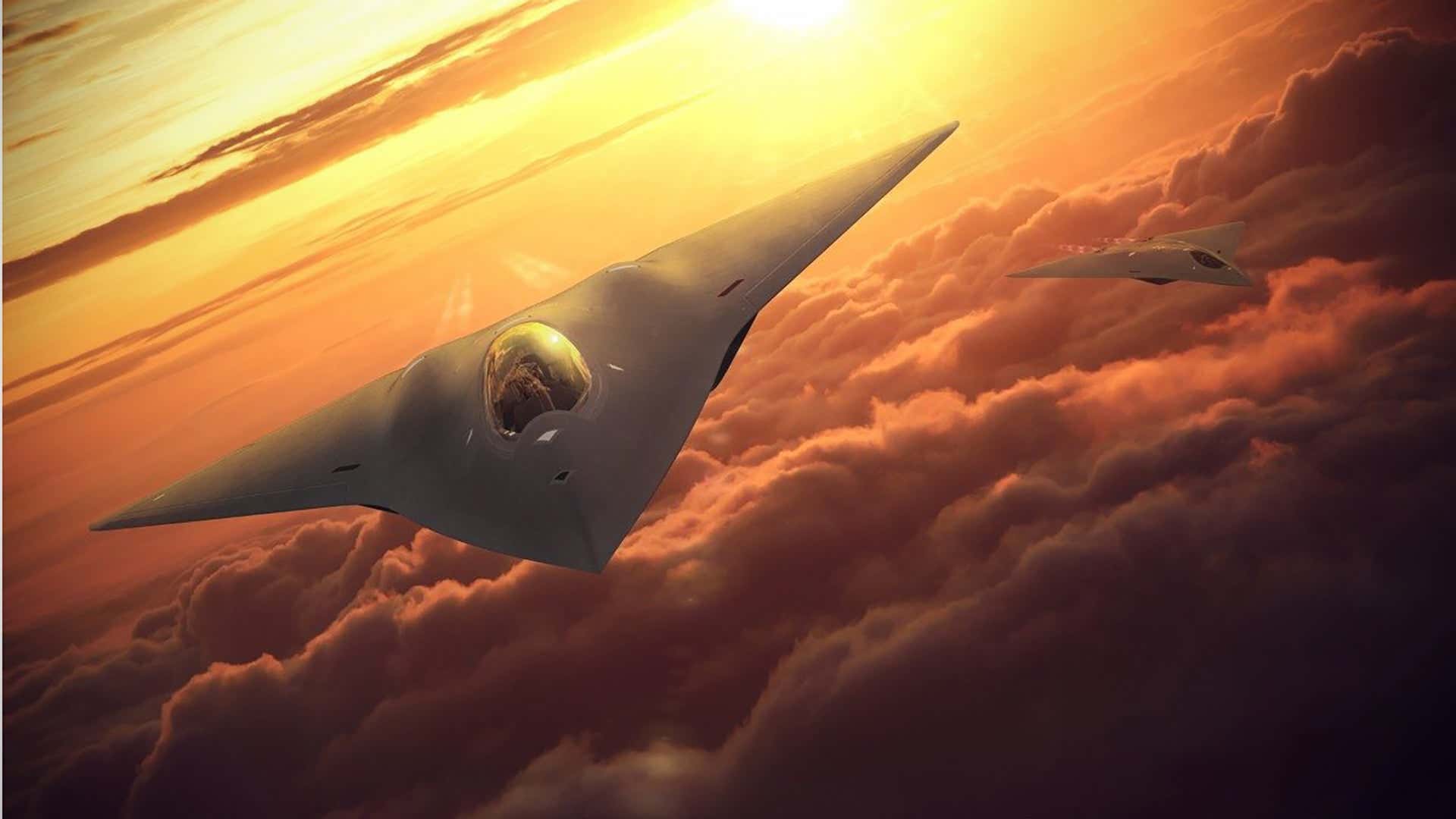
An artist’s concept of a manned NGAD fighter.
There is also the issue of unmanned options and the fact the Air Force is increasingly looking to integrating combat drones within its tactical aviation fleet. It is too early to say how that will affect plans for the manned fighter force mix, but it seems inevitable that the trend will have a major impact, more generally, on plans for future combat fleets.
With an Air Force fighter fleet that averages 28 years old, Brown recognizes “that’s not going to compete well with adversaries.” The TacAir study will therefore look at how to bring down the average age while remaining affordable — something it seems the F-35 is struggling to achieve.
The Air Force F-35A buy is still officially pegged at 1,763 aircraft but last December Aviation Week reported that, as early as 2018, the service had prepared a study that called for F-35A orders to be cut back to 1,050.
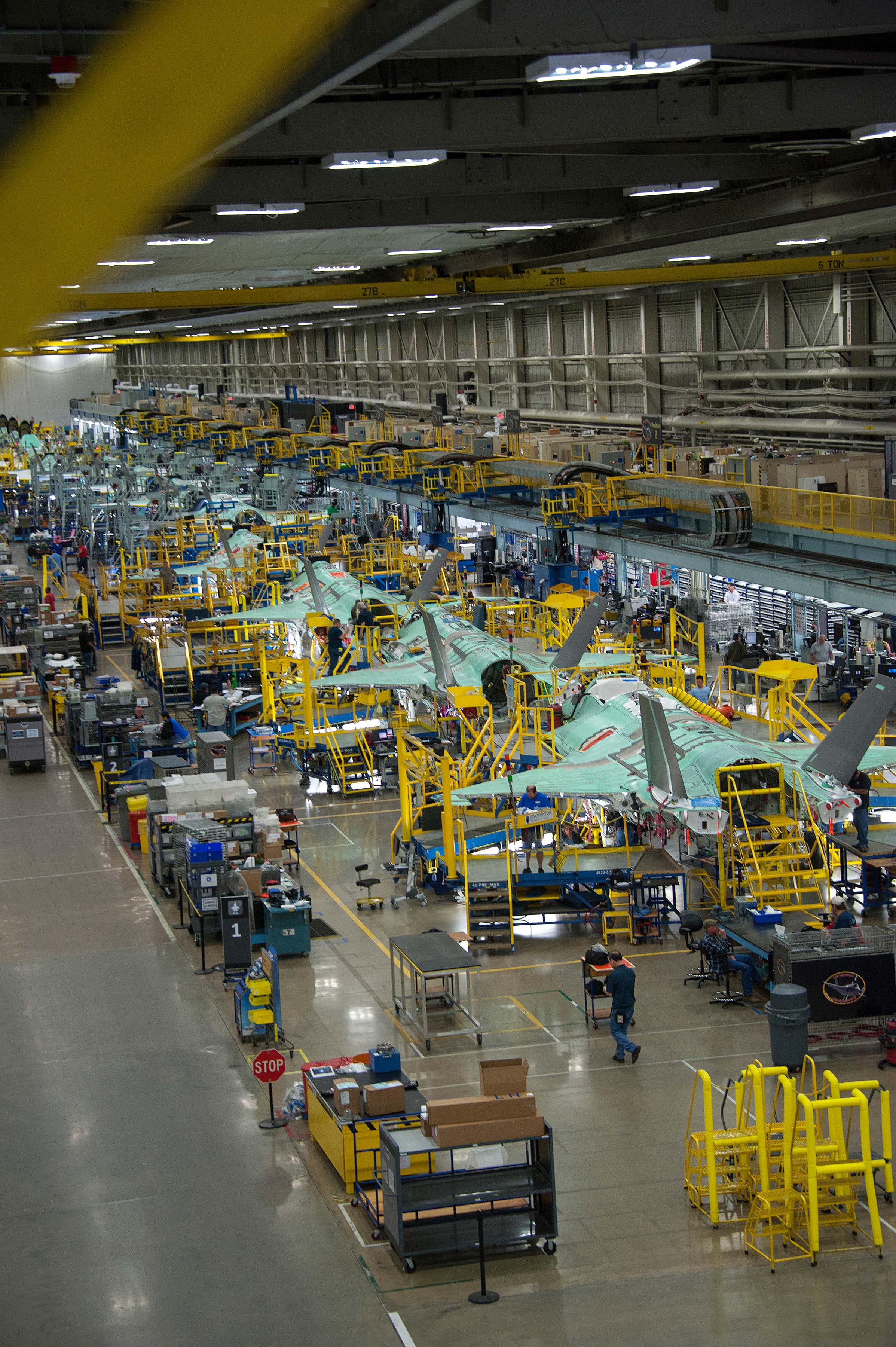
The F-35’s assembly line at Fort Worth, Texas.
Although the unit prices for all F-35 variants have been decreasing in the years since then, concerns have grown about the sustainment costs of the jets. In 2019, the U.S. military assessed it would cost $1.196 trillion just to operate and maintain the full planned fleets of F-35s across the U.S. Air Force, Marine Corps, and Navy through 2070.
Brown admitted that the F-35 is currently having problems with engine wear and that the TacAir study would factor this in, too. He said that the jet’s F135 engines are “failing a little faster in certain areas,” as a result of heavy usage and regular deployments. While changes to maintenance are being looked at, Brown also confirmed that one solution to the issue may simply be to use the F-35 less.
The Air Force is also facing a shortage of F135 engines, as increased demands for repairs cause a logjam in scheduled depot maintenance. Officials recently admitted this is an issue that could take months to solve.
“I want to moderate how much we’re using those aircraft,” Brown said. “You don’t drive your Ferrari to work every day, you only drive it on Sundays. This is our ‘high end’ [fighter], we want to make sure we don’t use it all for the low-end fight.”
One solution to that low-end fight could, of course, be the new fighter now being examined under the TacAir study.
It is becoming abundantly apparent that the Air Force is having second thoughts about whether it can actually afford the planned 1,763 F-35As, something that would have been hard to predict would happen just a couple of years ago. More recently, even the F-15EX acquisition faced pushback from those who felt it would threaten the F-35 enterprise.
It is highly significant that so far this year both Roper and Brown have suggested that a new F-16 model, or something like it, could be introduced to the Air Force and potentially reduce F-35 numbers in the process.
Speaking in January, before stepping down as Assistant Secretary of the Air Force for Acquisition, Technology, and Logistics, Will Roper said he thought the F-35A was “a long way from being an affordable fighter that we can buy in bulk.” He added that he expected to see “other trades in terms of numbers of F-35s, up or down, and capability mixes with Block 4 vs. things one might do with F-15EX or NGAD.”
“That’s why other tactical aviation options are appealing to have in the mix so that the Air Force has options,” Roper added.
That approach would seem to be in line with Brown’s plans to look at how a new tactical fighter might fit into the mix. What that fighter may look like, and whether the Air Force will be able to pay for it alongside the F-35 and NGAD, remain to be seen, however.
https://www.thedrive.com/the-war-zone/3 ... place-f-16
With a “son of F-16” under study, the Air Force's original procurement plan for the F-35 is looking increasingly precarious.
The U.S. Air Force is looking at an all-new fighter jet design to replace its F-16s, which currently provide the backbone of the tactical fleet. Air Force Chief of Staff General Charles Q. Brown Jr. is launching a months-long study into the service’s future force mix, which could include a “clean-sheet design” to replace the F-16 and which could potentially threaten long-held plans to buy 1,763 copies of the F-35A, originally intended as the F-16’s successor.
Speaking yesterday at the Defense Writers Group, Brown — a former F-16 instructor pilot — introduced his idea for a new “four-and-a-half-gen or fifth-gen-minus” fighter to supersede the Viper. The tactical aircraft (TacAir) study will be one proposal under investigation as the Air Force assesses the optimum balance for its tactical fighter force and will be run in concert with the Pentagon’s Cost Assessment and Program Evaluation (CAPE).
“This will help inform the decisions that I think I need to make internal to the Air Force, and what I would recommend that force mix might be,” Brown explained. “Now, I will also tell you I don’t think that everybody’s going to exactly agree with what I say. But I want to actually have a starting point as a point of departure, a point of dialogue.”
General Brown says he hopes that the force mix study will be completed in time to help inform decisions for the Air Force’s Fiscal Year 2023 budget request. “In the budget for FY 23, that’s where I see that we’ll really make some key decisions,” he added.
What the Air Force Chief of Staff has in mind is not an order for an advanced version of the F-16, such as the latest Block 70/72 version, something that outgoing Assistant Secretary of the Air Force for Acquisition, Technology, and Logistics, Will Roper, suggested could happen, in an interview with Aviation Week last month.
General Brown was vehement that the F-16 — even a much-improved version of the 1970s-era jet — is not the right choice for the future Air Force. He pointed to the Viper’s inability to receive software updates at the speed that’s desired and its lack of open-architecture software protocols that would allow it to be rapidly reconfigured.
Brown said he would want the new aircraft to feature “open-mission systems” — something that the Air Force has recently been testing in live flying scenarios involving manned aircraft. This kind of open architecture design would allow the new fighter to receive software updates in rapid succession, potentially even during a mission.
Instead, what the Air Force will consider is the manufacture of “something new and different, that’s not the F-16 — that has some of those capabilities but gets there faster and uses some of our digital approach,” Brown said. The reference to speed hints at a platform that will be quicker than the F-16, perhaps indicating a desire for a supercruise capability. Overall, higher speed would not only help boost sortie rates but also increase survivability in contested environments.
This “digital approach” could well be fundamental to the whole idea of a new tactical fighter for the Air Force and echoes the “Digital Century Series” that was another Roper brainchild. In this concept, smaller numbers of aircraft are rapidly produced to meet dynamically evolving threats, keeping pace with peer threats like China and Russia.
A similar type of digital engineering — the so-called eSeries concept — has also become a hallmark of the Air Force’s new T-7A Red Hawk trainer, as well as the Next Generation Air Dominance (NGAD) program, which is taking a system-of-systems approach to developing future aerial combat capabilities. Last September, Roper confirmed that some form of NGAD prototype had already flown, but Brown suggested the new tactical fighter would be tailored to work complementary to NGAD, as well as the F-35.
Indeed, Brown specifically named all three programs, pointing out that each was needed “to remain competitive against our adversaries” as well as to conduct the “low-end fight.” It might be surmised, therefore, that the proposed new tactical fighter would either be optimized to some degree for low-end warfare — like the type of asymmetric combat that the Air Force has been involved in for years in Afghanistan and the Middle East — or its design would otherwise incorporate lessons from these campaigns.
The idea of the tactical aircraft (TacAir) study is “to look at what is the right force mix,” he said, explaining that the service needs fifth-generation fighters such as the F-35; it needs NGAD “to remain competitive against our adversaries;” and, it needs capabilities for the “low-end fight.”
At this point, there is no timeline for any kind of prototype or demonstrator to be produced for the TacAir study, although experience with the NGAD suggests that would at least be feasible in relatively short order. Instead, however, Brown said the focus now is on “modeling and simulation and analysis,” adding that “that’s what I plan to do here over the coming months.” Beyond that, any decision on where the program would go next would also be based on the findings of CAPE — the body that advises the Pentagon on alternative weapon systems and force structures as well as their cost-effectiveness.
As well as CAPE, Brown’s TacAir study is supposed to align with another, separate study, the new Global Posture Review, which is described as a “review to ensure the footprint of American service members worldwide is correctly sized and supports strategy.” This will consider, for example, the future status of forward-deployed Air Force assets.
“I think the dialogue back and forth between the two will help shape the Global Posture Review; at the same time, the Global Posture Review will help shape our TacAir study based on the priorities the department has laid out,” Brown said.
As well as assessing if there’s a place for a future “clean-sheet design” in the tactical fighter inventory, Brown says it might be time to reassess the service’s aim to field 386 squadrons across the Air Force. In 2018 the service unveiled its plans to massively expand force structure from 312 squadrons to 386 by 2030, a plan that The War Zone discussed in detail in this previous feature.
“I want to get as close as I can to 386 capability with the force size that I have, with the dollars we have available and make that case,” Brown confirmed. Moreover, the Air Force chief hopes that the kinds of capabilities embodied in a revised tactical fighter mix could also achieve the desired capability with fewer than 386 squadrons.
The observation about what this will all cost is critical, of course. The Air Force is already under pressure to pay for the F-35 — the most expensive program in Pentagon history — as well as NGAD, with the potential to add another new tactical fighter on top of this. In the meantime, the Air Force has also committed to buying new F-15EX fighter jets to top up its current tactical fleet, while there will also be various unmanned programs that also demand a share of the budget. That is not to mention all the other initiatives outside of the Air Force’s tactical airpower portfolio.
The trifecta of NGAD, F-15EX, and — potentially — something else under TacAir further emphasizes that the F-35 program is starting to come under increasing pressure, too.

An artist’s concept of a manned NGAD fighter.
There is also the issue of unmanned options and the fact the Air Force is increasingly looking to integrating combat drones within its tactical aviation fleet. It is too early to say how that will affect plans for the manned fighter force mix, but it seems inevitable that the trend will have a major impact, more generally, on plans for future combat fleets.
With an Air Force fighter fleet that averages 28 years old, Brown recognizes “that’s not going to compete well with adversaries.” The TacAir study will therefore look at how to bring down the average age while remaining affordable — something it seems the F-35 is struggling to achieve.
The Air Force F-35A buy is still officially pegged at 1,763 aircraft but last December Aviation Week reported that, as early as 2018, the service had prepared a study that called for F-35A orders to be cut back to 1,050.

The F-35’s assembly line at Fort Worth, Texas.
Although the unit prices for all F-35 variants have been decreasing in the years since then, concerns have grown about the sustainment costs of the jets. In 2019, the U.S. military assessed it would cost $1.196 trillion just to operate and maintain the full planned fleets of F-35s across the U.S. Air Force, Marine Corps, and Navy through 2070.
Brown admitted that the F-35 is currently having problems with engine wear and that the TacAir study would factor this in, too. He said that the jet’s F135 engines are “failing a little faster in certain areas,” as a result of heavy usage and regular deployments. While changes to maintenance are being looked at, Brown also confirmed that one solution to the issue may simply be to use the F-35 less.
The Air Force is also facing a shortage of F135 engines, as increased demands for repairs cause a logjam in scheduled depot maintenance. Officials recently admitted this is an issue that could take months to solve.
“I want to moderate how much we’re using those aircraft,” Brown said. “You don’t drive your Ferrari to work every day, you only drive it on Sundays. This is our ‘high end’ [fighter], we want to make sure we don’t use it all for the low-end fight.”
One solution to that low-end fight could, of course, be the new fighter now being examined under the TacAir study.
It is becoming abundantly apparent that the Air Force is having second thoughts about whether it can actually afford the planned 1,763 F-35As, something that would have been hard to predict would happen just a couple of years ago. More recently, even the F-15EX acquisition faced pushback from those who felt it would threaten the F-35 enterprise.
It is highly significant that so far this year both Roper and Brown have suggested that a new F-16 model, or something like it, could be introduced to the Air Force and potentially reduce F-35 numbers in the process.
Speaking in January, before stepping down as Assistant Secretary of the Air Force for Acquisition, Technology, and Logistics, Will Roper said he thought the F-35A was “a long way from being an affordable fighter that we can buy in bulk.” He added that he expected to see “other trades in terms of numbers of F-35s, up or down, and capability mixes with Block 4 vs. things one might do with F-15EX or NGAD.”
“That’s why other tactical aviation options are appealing to have in the mix so that the Air Force has options,” Roper added.
That approach would seem to be in line with Brown’s plans to look at how a new tactical fighter might fit into the mix. What that fighter may look like, and whether the Air Force will be able to pay for it alongside the F-35 and NGAD, remain to be seen, however.
https://www.thedrive.com/the-war-zone/3 ... place-f-16
- jambockrs
- Sênior

- Mensagens: 2617
- Registrado em: Sex Jun 10, 2005 1:45 am
- Localização: Porto Alegre/RS
- Agradeceu: 427 vezes
- Agradeceram: 180 vezes
Re: USAF News
O domínio lmgur.com está à vendaViktor Reznov escreveu: ↑Ter Set 08, 2020 6:40 pmprovavelmente o site no qual você está linkando as imagens tem proteção contra hotlinking, aí você teria que salvá-las e hospedá-las em outro site, como no Imgur.com por exemplo
